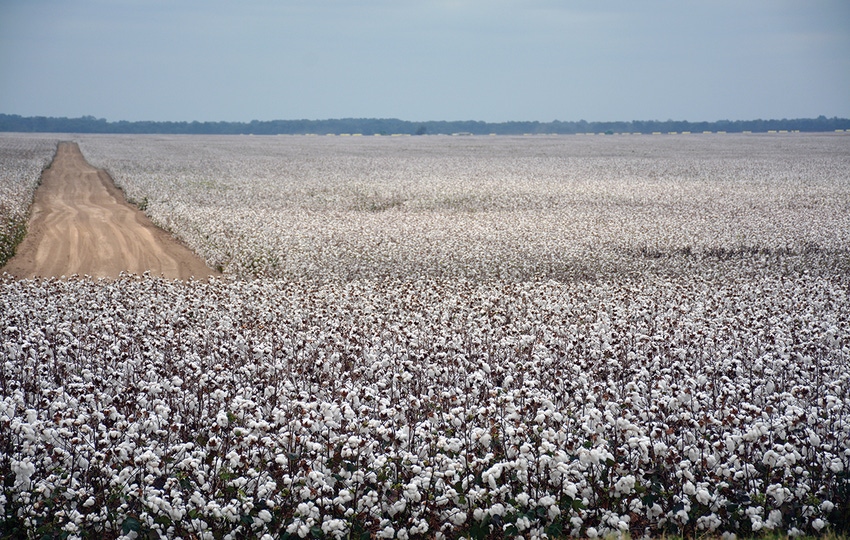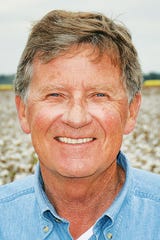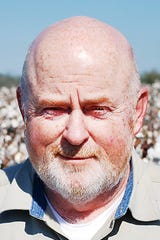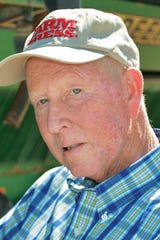February 16, 2016

2016's High Cotton Awards will be presented in a different venue, but they will still recognize the best of the best when it comes to growing quality cotton and taking care of the land and water.
For the first time, the High Cotton Awards, which are sponsored by Farm Press Publications through a grant to The Cotton Foundation, will be held in conjunction with the Mid-South Farm and Gin Show at Memphis.
The 2016 winners — Larry McClendon, Marianna, Ark.; George “Teel” Warbington, Vienna, Ga.; Bill Lovelady, Tornillo, Texas; and Dennis Palmer, Thatcher, Ariz., will be honored at an awards breakfast at the Sheraton Hotel on the opening day of the “Gin Show” at the downtown Cook Convention Center.
“The High Cotton Award winners represent some of the best cotton producers in the nation,” says Greg Frey, vice president at Penton Inc., which publishes Delta Farm Press, Southeast Farm Press, Southwest Farm Press and Western Farm Press. “They also do their utmost to protect the land, air, and water where they farm. They represent the very best in environmental stewardship.”
This will be the 22nd year the editors of the four Farm Presses and a representative of the Memphis-based Cotton Foundation have presented the unique Cotton Boll trophy to the winners. The trophy is comprised of a bronze casting of a near-perfect cotton boll picked in the Mississippi Delta.
Co-sponsors of this year’s awards are AMVAC, BASF, Bayer FiberMax/Stoneville, Dow Phytogen, Helena Chemical Company, John Deere and Netafim.
Following are briefs summaries for the four winners:
Larry McClendon
You don’t have to spend much time on the farm of this year’s Delta High Cotton winner to realize Larry McClendon is a very hands-on manager, which includes making extensive use of minimum tillage, cover crops, and other conservation practices to protect soil and water.
“I have a number of absentee landlords,” he says. “Many of the families who owned some large plantations no longer live in the area, so they rent their land to farmers like me. We try to keep them apprised of what’s happening on their land and to take care of it like we do our own.”

Larry McClendon
Larry McClendonBeing in a flood plain for the Mississippi and St. Francis rivers has its pluses and minuses. Much of the land he farms is a Commerce silt loam, which was deposited during centuries of overflows from the two rivers, along with some sandier and clay soils. In years like 2011, when the Mississippi reached its highest level in decades, being in a flood plain also meant McClendon and his workers had difficulty getting across the farm because of flood waters.
Another positive is an ample supply of groundwater that allows him to irrigate almost all of his crops. He also has installed water control structures — such as one in Cow Bayou near U.S. Highway 79 — which allow him to recycle runoff from furrow irrigation back on to his fields.
Besides land-leveling to reduce erosion, he is also shifting to less tillage. “Basically, we’re just trying to re-hip over the old rows for corn, grain sorghum, and cotton,” he says. “We do have to re-hip to provide furrows for irrigation, but everything we do we do in the fall. The first trip you make across the field in the spring should be with the planter.”
On his lighter, sandy soils, McClendon is planting cover crops such as turnip greens and cereal rye to help hold soil in place and keep beds from eroding during the winter months. He’s become an advocate for cereal rye as a cover crop.
George 'Teel' Warbington
This year’s Southeast winner, George “Teel” Warbington, began his career with his father, James D. Warbington, Sr., and brother, James D. Warbington, Jr., not long after graduating from college in 1986.

George Warbington
George WarbingtonNow Teel and his brother, James D. Warbington, Jr., are partners on the farm, along with James’ son, James D. Warbington III, and Teel’s son, George. James D. Warbington, Sr., continues to work on the farm every day.
The Warbingtons want to keep the farm going for as long as the next generations want to keep farming, Teel Warbington says. To accomplish that goal, land stewardship is a priority — but it also makes good business sense.
They begin each season by grid sampling fields, with the goal of applying fertilizer at a variable rate only where it is needed. They strip-till everything into cover crops, a practice they have followed for more than 15 years to maintain soil quality, control erosion, and increase water retention — all key steps in producing cotton in an environmentally friendly way.
Bill Lovelady
While growers like Warbington and McClendon can be blessed with almost too much rainfall, the Southwest High Cotton winner, Bill Lovelady, is striving to do more with less irrigation water.

Bill Lovelady
Bill LoveladyLovelady’s goal is to become water independent — to rely on groundwater to irrigate his usual 1,000 acres of cotton and 80 acres of pecan trees, and to stop depending on the uncertainty of river water and Elephant Butte Reservoir, which was holding only about 8.5 percent of capacity in late September.
With average annual rainfall of 7 inches and Elephant Butte dependent on meager rain and unpredictable snowmelt from New Mexico and Colorado mountain ranges, Far West Texas cotton farmers can ill afford to waste one drop of irrigation water.
“We have to manage water carefully,” says Lovelady, who grows mostly Pima cotton in El Paso and Hudspeth counties. “Everything gets laser-leveled; we cut off the little hills across the fields to improve irrigation efficiency.”
He understands conservation from a need to improve irrigation efficiency to the necessity of preserving topsoil in what has to be one of the most challenging places to grow profitable yields of high-quality cotton.
“Ideally, we run the laser level over the fields as often as we can,” he said in late September when his Pima cotton was showing its distinctive yellow blossoms and stalks were holding decent boll loads.
Laser-leveling helps distribute water from furrow irrigation more evenly down the rows, he says. “For the last three years water quantity and quality have been less than desirable. I plant the driest two farms in El Paso and Hudspeth counties. I have 100 percent water rights in El Paso County — but 100 percent of nothing is not a lot of water.”
He typically pre-waters fields before planting and then irrigates five times during the season, using well water.
He’s cut back on tillage, too. “We think our wind erosion is horrible,” Lovelady says, although he admits that compared to the High Plains it’s not so bad.
“We do get some sandstorms, but we don’t do any sand fighting. We occasionally get some seedlings cut off by blowing sand, but it’s not a major problem. “When I first started farming I used a moldboard plow on every acre, but now I chisel only.”
Dennis Palmer
Dennis Palmer, this year’s High Cotton winner for the West, is a strong believer in using technology to help solve the multiple problems that beset cotton producers.

Dennis Palmer
Dennis PalmerIn the early years, the Palmers (Dennis and his son, Matt) slowly embraced technology. Dennis says he was skeptical about GPS, yet begrudgingly adopted it. “Today, GPS is invaluable to our operation �— it has improved field accuracy and farm efficiency for us.”
The family’s next technological plunge will be variable rate fertilization, using yield maps created by the cotton pickers, and implementation of drone technology.
Pest and disease issues are relatively low at VIP Farms. Whitefly, lygus, and aphid pressures are under the economic threshold for treatment. While the pink bollworm caused the Palmers headaches years ago, the insect is virtually eradicated in the Southwest today. “We haven’t used a single insecticide on our farm in the last five years,” Dennis says.
The Palmers closely scout fields, placing a heavy emphasis on integrated pest management — using beneficial insects to help keep fields clean. “We have created a version of nirvana out there,” Palmer says. “Good bugs eat the bad bugs. Our cotton is clean.” Matt chimes in: “We rely on ‘beneficials’ to do their job and they have done it.”
Water is perhaps the greatest challenge facing the Palmer operation — usually the lack of it rather than too much. The farm’s water supply is about equally split between surface water from the nearby Gila River and groundwater. Overall water quality is good.
Dennis’ wife, Margaret, jokingly says Matt’s cell phone number is the No. 1 listing on Dennis’ cell phone speed dial. Matt helps manage the day-to-day operations, including field work and irrigation.
“Once cotton farming is in your blood, you get hooked,” Matt says. “I enjoy the sights, smells, the seasons — and straight cotton rows!”
About the Author(s)
You May Also Like






